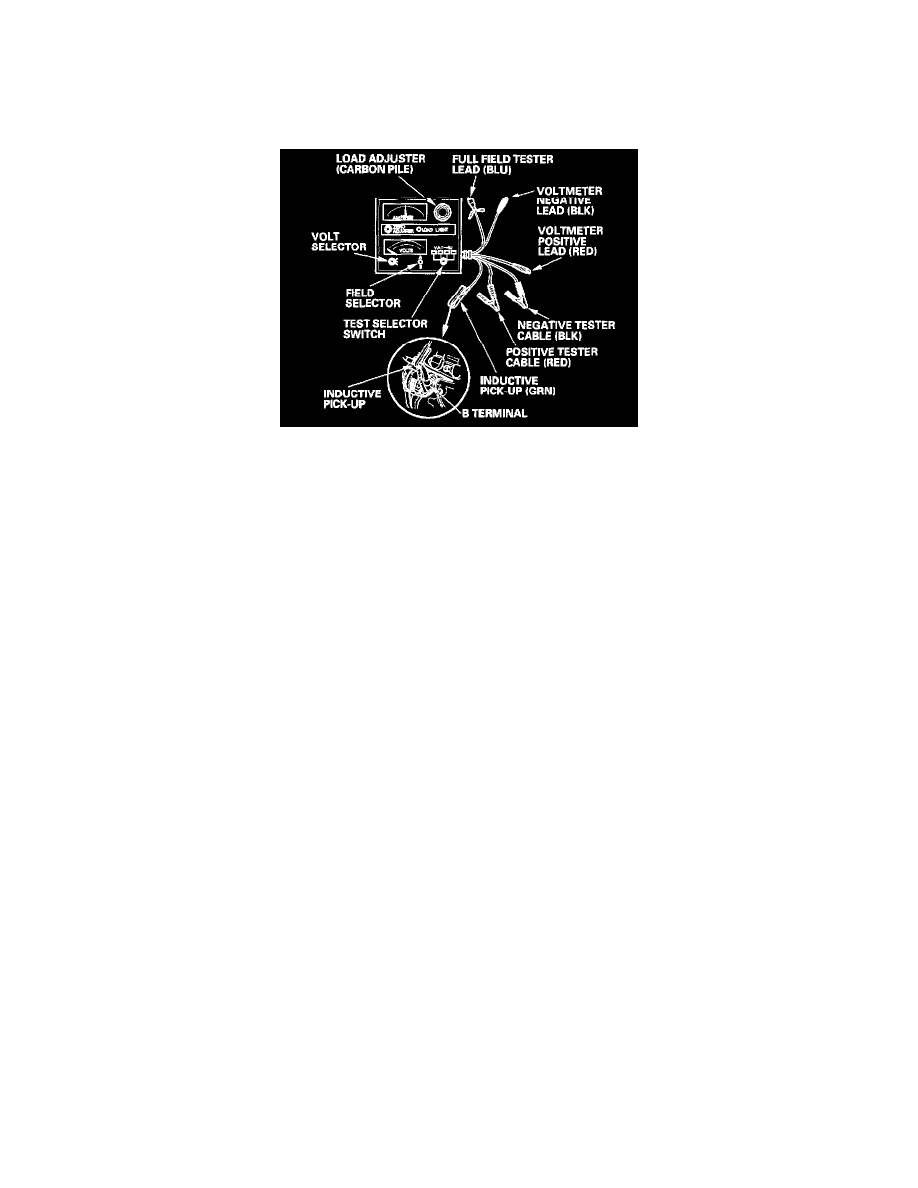MDX V6-3471cc 3.5L (2002)

Alternator: Testing and Inspection
Alternator and Regulator Circuit Test
Alternator and Regulator Circuit Test
1. Be sure the battery is sufficiently charged and in good condition.
2. Connect a VAT-40 (or equivalent tester), and turn the selector switch to position 1 (starting).
3. Shift to Park or Neutral, and start the engine. Hold the engine at 3,000 rpm, with no load until the radiator fan comes on, then let it idle.
4. Raise the engine speed to 2,000 rpm, and hold it there.
Is the voltage over 15.1 V?
YES - Replace the rear housing assembly.
NO - Go to step 5.
5. Release the accelerator pedal, and let the engine idle.
6. Make sure all accessories are turned off. Turn the selector switch to position 2 (charging).
7. Remove the inductive pick-up, and zero the ammeter.
8. Place the inductive pick-up over the B terminal wire of the alternator so that the arrow points away from the alternator.
9. Raise the engine speed to 2,000 rpm, and hold it there.
Is the voltage less than 13.5 V?
YES - Go to Alternator Control System Test.
NO - Go to step 10.
10. Apply a load with the VAT-40 until the battery voltage drops to between 12 - 13.5 V.
Is the amperage 87.5 A or more?
YES - The charging system is OK.
NO - Repair the alternator.
Alternator Control System Test
1. Check for proper operation of the Electrical Load Detector (ELD) by checking the Malfunction Indicator Lamp (MIL).
2. Disconnect the alternator 4P connector from the alternator.
3. Start the engine, and turn the headlights (high beam) ON.
